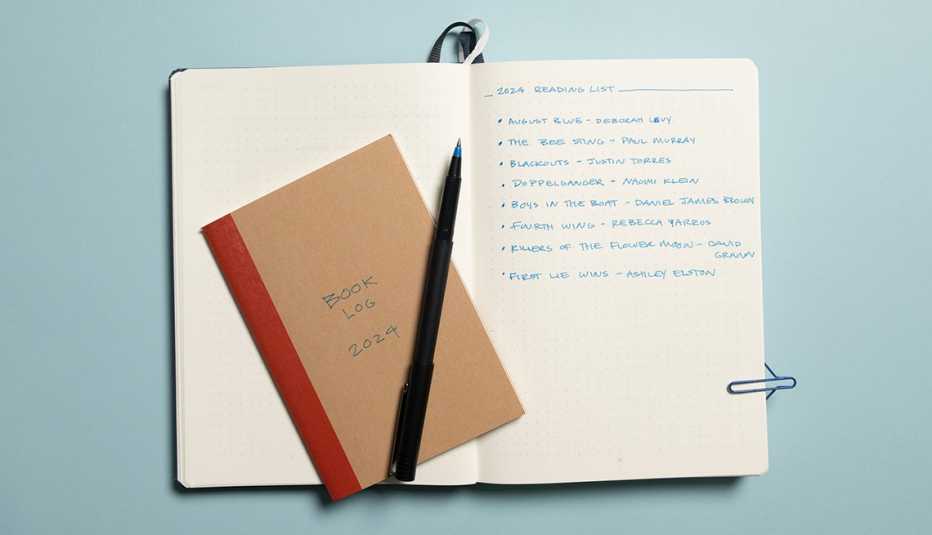3. Create an index.
The index is like a table of contents that lives at the front of your journal. Number the pages of your notebook before using it (or choose a notebook with numbered pages), then update the index as you work through the notebook. You’ll seamlessly create an inventory of what you’ve written down and where to find it.
4. Create future and monthly logs.
Like a classic year-at-a-glance calendar, use the pages after your index to note important dates and plans for the year ahead. (One common layout, popularized in the book Dot Journaling — A Practical Guide, by Rachel Wilkerson Miller, divvies up the year on two facing pages, with six months per page.)
For an overview of monthly highlights, you can also create a monthly log before or after your daily logs for each month (for more on daily logs, skip to the next step). Carroll’s system visualizes the month as a two-page spread, with the days of the month — plus any noteworthy events and tasks — noted on one side and a list of monthly priorities on the other.
5. Create a daily log.
Each day, jot down tasks, events and notes as they come up. You might use a page per day or fit several days onto one page. As you go along, mark the day’s tasks to reflect your progress. Carroll also has a set of symbols for that (for example, an “X” for a task that is complete, or an arrow symbol for a task you’re moving to the following day or month).
Some users, including Mierzwinski, also create a weekly log for an added layer of organization. As with all logs, the format is flexible. Mierzwinski’s layout includes the days of the week (plus corresponding tasks and chores) on one side of a two-page spread, with room for jotting notes on the opposite page.
6. Customize your spreads.
For many, personalizing the rest of your pages is where the fun really begins. Beyond the four basic logs above, you can keep track of, well, anything — a reading list, an exercise routine or progress toward a financial goal.
Kim Alvarez, who founded the popular journaling and creativity website Tiny Ray of Sunshine in 2014, says the two most common add-ons she sees are gratitude logs and habit trackers, which are detailed grids (like a ledger or a hand-drawn spreadsheet) that help you keep track of things such as meals, chores and other daily goals.
As for adorning your spreads? There’s no hard-and-fast rule. Some people choose to doodle and decorate, others keep things streamlined. Alvarez says she would put herself “straight down the middle” of the spectrum between a simple and embellished style.
7. Migrate, reflect, repeat.
Because bullet journaling is a flexible system, feel free to adapt your setup as new needs arise. Mierzwinski, for example, has developed a two-notebook system: A smaller notebook contains her daily to-do list, and a larger one contains spreads for longer-range planning and a section called “Capture,” in which she jots down special memories and tidbits, such as a memorable recipe or song.
Another plus? Both Mierzwinski and Alvarez note that one of the main benefits of bullet journaling, beyond staying organized on a daily basis, is the way that looking back through an old notebook can help you reflect on how you’ve been spending your time.
That reflection is intentional. It’s the goal of another aspect of Carroll’s system, called “migration” — the process of periodically taking stock of the tasks you haven’t finished, and either rescheduling them or deciding not to pursue them. Those choices, Carroll says, can have a big impact over time.
In other words, he says, “The question isn’t ‘how am I going to get this done?’ but ‘why am I working on this?’ When you start thinking that way, things change.”
Editor's note: This article was originally published on August 15, 2019. It has been updated to reflect new information
Sarah Elizabeth Adler is a writer based in Washington, D.C. She has written about science, art and culture for outlets including aarp.org, where she was previously a staff writer, The Atlantic and California magazine.












































































